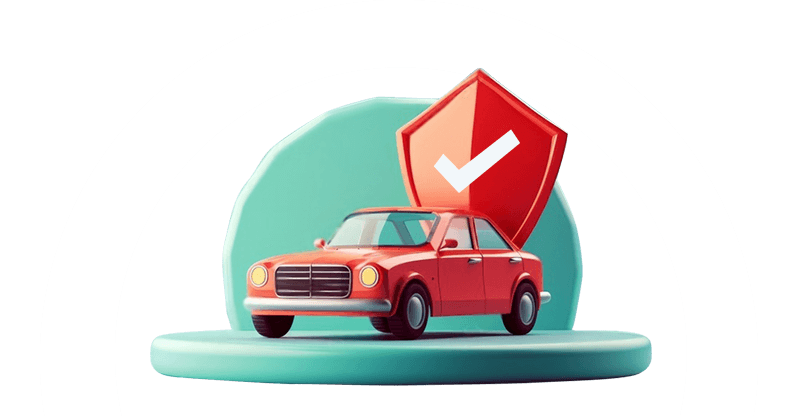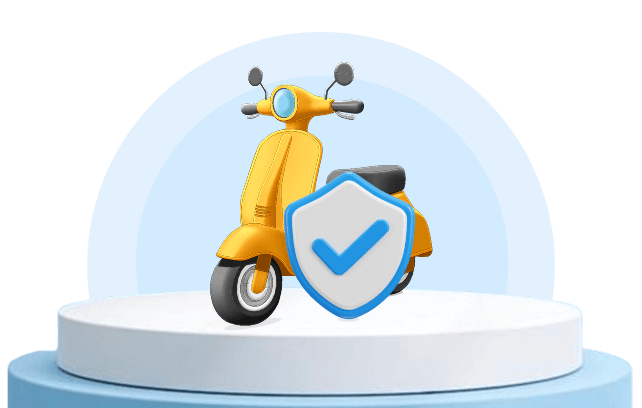
Let’s be honest: It is no fun reading a legal document, especially one related to insurance. The structure, language, terminology, and everything else are so confusing, making it unfriendly to read and understand. But did you know that it is extremely important and useful to read your insurance policy? (Here, we are concerned about your car insurance policy.)
It is a general trend, especially in the Philippines, where car owners sign the insurance document blindly, at the given mark, one by one. They have no clue what’s exactly written and go by the agent's words. No, we are not saying not to trust your insurance agent or provider, but chances are, they may hide something, or there is a miscommunication. All this will lead to trouble later, and can be avoided just by going through the car insurance papers. For example, your claim might get denied because your policy doesn’t offer a particular coverage that you thought was part of the policy. Note that instances like these are a common occurrence, so be wise, read, and ask questions when in doubt.
Worried, how will you be able to read and understand your car insurance policy? Don’t worry, we have created this simple guide for you that will help you break down the policy. So, go ahead, read and start understanding your policy better. Here, we’d also recommend that you go through our detailed blog on important car insurance terminology, as it helps you better understand the policy and its complicated language.
Car insurance policy
What is a car insurance policy? It is a legal document that outlines an agreement between the car owner (policyholder) and the insurance company. It mentions essential information like policy coverage, terms, conditions, and also the responsibilities of both the involved parties regarding the protection of the insured vehicle.
In this contract, you’ll be able to know the following -
- Damages or losses covered
- Damages or situations not covered
- Premium required to be paid
- Deductible to be paid
And the list goes on. In short, the policy mentions everything; when it comes to car insurance, verbal promise has no value; it needs to be there, mentioned in writing.
Types of car insurance policies
In the Philippines, there are two types of car insurance policies that you’ll most commonly find mentioned in the contract - the CTPL insurance and comprehensive insurance. However, the policy will list all the other coverages you have opted for, along with the entitlement if something goes wrong.
Here, we’d recommend that you read the CTLP vs. Comprehensive insurance blog for a detailed understanding of the types of policies. However, for the sake of a quick overview, CTLP insurance is the minimum policy the law requires for every motor vehicle owner in the country, which offers coverage against third-party injury/death. It offers no coverage for your car.
Comprehensive coverage, on the other hand, is highly recommended and offers broader protection.
In case you have opted for add-on coverage, that too would be specified on the contract very clearly. Some common add-ons include - Acts of God, Loss of Use, Roadside Assistance, Personal Accident coverage, and more.
 Photo from Freepik
Photo from FreepikKey components of a car insurance contract
Here are the key sections that you’ll find in your car insurance policy (for a private car). This will help you understand the policy better, as you’d know what to expect.
Policyholder’s personal information
The first thing you’ll notice is your details, like name, address, and contact number/email address. Make sure to check the spellings and other mistakes.
Policy details
Next up are the policy details like policy number, date of issue, official receipt number, confirmation of cover number, and period of insurance. From here, you’ll also get information about the period of coverage; typically, a car insurance policy in the Philippines lasts for a year.
Covered vehicle details
This section will cover complete information about the insured vehicle. For example, the vehicle’s model, make, type of body, colour, plate no, serial/chassis number, motor no, authorised capacity, unladen weight, and M.V. file number.
The policy also mentions the ‘insured’s estimate of value of the covered vehicle’ and the accessories it packs like aircon, stereo, magwheels, etc.
Coverage details
You will find information about third-party liability insurance, along with the limit of liability and premium paid. In case of comprehensive insurance and add-on, specific details would be mentioned.
Premium details
You will find clear details about the premium payment. Mostly, the policies mention a premium for each coverage separately (so that you know the cost of each coverage). At the end, everything is added together to give the total premium.
Total due amount
No, the total premium is not what you end up paying. The total due amount adds a bunch of taxes and duties to the premium cost.
Coverage and benefits
The policy will mention clearly what is covered and the maximum payout for each incident.
Exceptions
We’d advise you to read this section carefully, as it will tell you when/where the car insurance will offer no coverage. It will help you prepare in advance and save you from unpleasant surprises.
Definition
There’s a section called definition in the contract that explains a few basic terms used in the contract, like motor vehicle, third party, and passenger.
Clause
Read carefully, the insurance policy often mentions two important clauses - the Nuclear Exclusion Clause and the Waiver Clause.
Policy cancellation penalty
Mostly mentioned under the ‘Short Period Rate of Scale’, here you’ll find information about the percentage of premium the insurer will refund in case the insured cancels the policy.
 Photo from Freepik
Photo from FreepikCar insurance policy fine print
It is extremely important to read the fine print of your car insurance policy. We know that it’s not easy, but skipping it is risky, as you could miss out on important information altogether that might cost you later.
Reading the fine print will help you gather key information about cancellation clauses, renewal procedure, claim manner and timeline, No Claim Bonus, and what to do in case of car modification.
Do this after receiving the policy
After receiving your car insurance policy, make sure to do the following -
- Get two to three photocopies made immediately.
- Keep the original document in a safe place.
- Thoroughly check the information mentioned on the contract, see if everything from personal details to the vehicle’s information is correct.
- Read the fine print, every clause, exemption, term, and condition. Leave no word unread.
- Contact your insurance provider/agent in case of any discrepancies or questions.
Mistakes to avoid when reading your car insurance policy
- Not reading the exclusions.
- Skipping the clauses.
- Ignoring the policy cancellation section.
- Confusing total premium with total amount due.
- Thinking that car insurance covers all accidents.
Bottom line
Do you want to be considered a smart, well-informed car owner? If yes, then you'd better tick a few boxes, one of which is getting a car insurance policy and understanding the fine print. We all know that car insurance is a legal requirement we can’t skip, and it will safeguard you in the time of need, like an accident. But getting CTPL and comprehensive insurance is not all; it is equally important to read the policy documents. Why? This practice will help you identify errors, give a proper idea about the policy inclusion and exclusion, and save you from any last-minute surprises. So, go ahead, read, understand, and get the most out of your policy.
FAQs
Can I only get CTPL insurance for my car?
While it is completely the policyholder's choice, the general view is that CTPL insurance is mandatory but not sufficient due to its limited coverage scope.
Is it an option to buy car insurance online in the Philippines?
Absolutely yes. Many well-known and trusted insurance providers in the country offer online services where applicants can apply for CTPL and comprehensive coverage.
How much does comprehensive coverage cost?
In the Philippines, the cost of comprehensive insurance varies widely. Depending on the car’s value, make, and model, it could range anywhere between PHP 10,000 to PHP 100,000 + annually.
What factors generally affect the car insurance premium?
In addition to your car’s value, make, and model, the following factors influence the insurance premium: deductible, add-ons, and coverage.
How can I find the best insurance policy at the best price?
To find a good insurance policy at the best price, it is recommended to compare quotes from different providers.
What will happen if I miss my insurance premium payment?
While the consequences may vary depending on the insurance provider, the most common after-effects include policy lapsing, potential fines, loss of the No Claim Bonus, and increased future premiums.
Is ‘Act of God’ coverage part of comprehensive insurance?
Not necessarily, it depends on the insurance provider. If it’s not a part, you can get it as an add-on coverage.
Is it possible to switch insurance providers before the policy ends?
You can terminate the policy, however, doing so before the policy ends might lead to a fine/cancellation fee.








